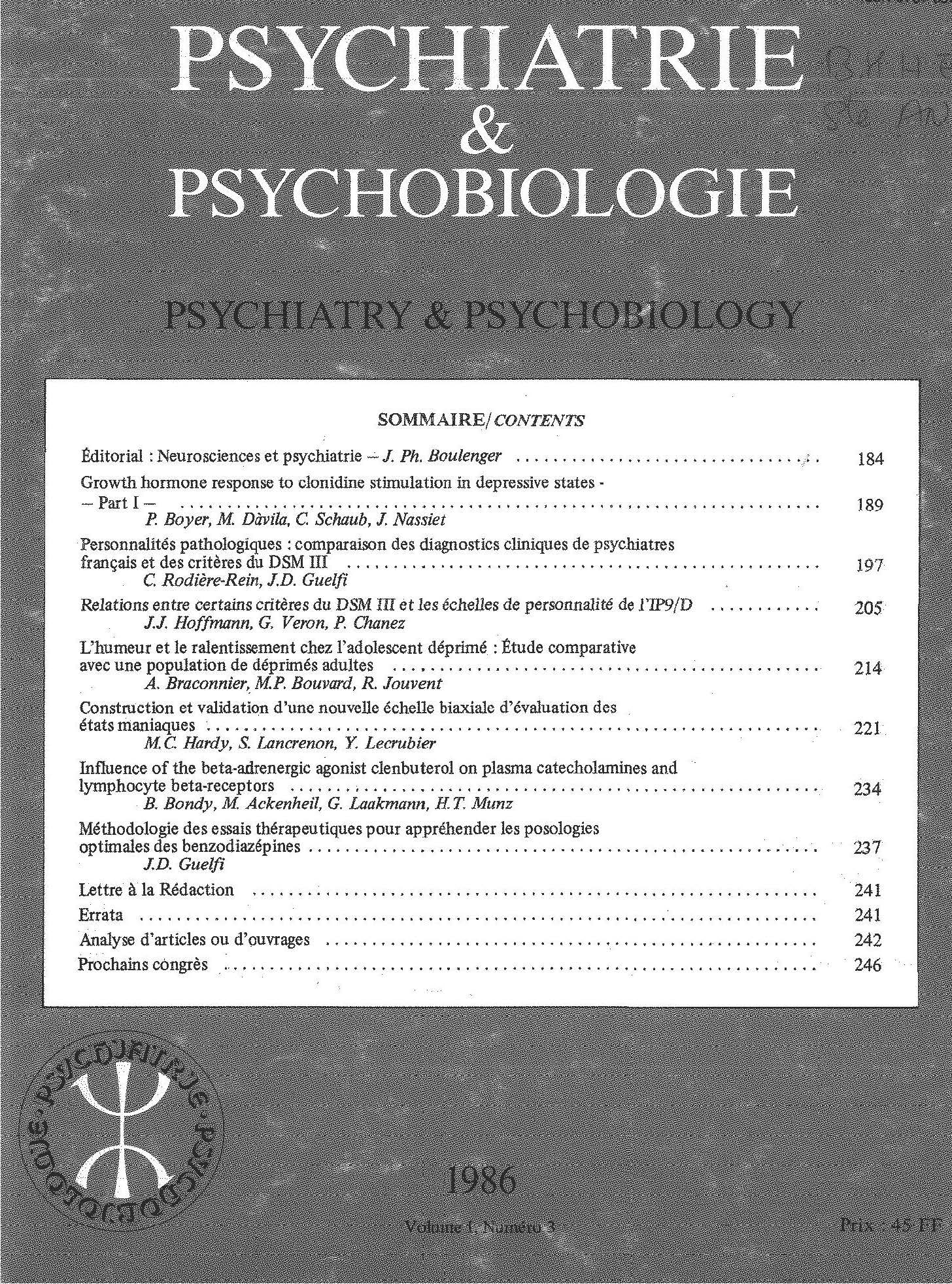Article contents
Serotonergic mechanisms and suicidal behavior
Published online by Cambridge University Press: 28 April 2020
Summary
Disturbances in central serotonin (5-hydroxytryptamine, 5-HT) were first described in depression. They were inferred to exist based on the finding of lowered baseline and post-probenecid concentrations of 5-HIAA in CSF. Initially, depressed patients with and without deimonstrable disturbances in central 5-H1 seemed psychopathologically indistinguishable. Interpreting the available data, at that time, we introduced in 1971 the concept of biochemical heterogeneity of depression. Some forms, we postulated, are linked to disturbances in 5-HT functions, others are not or, to a much lesser extent. Subsequently, we showed the concept of a separate «5-HT depression» to be untenable. It seems more likely now that 5-HT disturbances in depression are not linked to a particular syndromal depression type, but to particular psychopathological dimensions, i.e. heightened anxiety and disturbed aggression regulation. These dimensions might form a prominent aspect of depression or may be virtually absent. They are moreover not specific for depression, but can occur in other psychiatric disorders as well. This might explain the seemingly capricious occurrence of 5-HT disorders in depression as well as their nosological non-specificity.
Based on the dimensional 5-HT hypothesis one might expect drugs that increase 5-HT availability in the brain to be effective in the various anxiety disorders, in depressions marked by increased anxiety and disturbed aggression regulation and in personality disorders with strong aggressive tendencies.
Résumé
Des perturbations du fonctionnement du système sérotoninergique central ont tout d'abord été décrites chez des patients déprimés. Leur existence était inférée de la découverte de faibles concentrations basales de SHIAA dans te LCR après administration de probénècide. Initialement, les patients déprimés avec ou sans anomalies sérotoninergiques centrales semblaient indistinguables quant à la psychopathologie. Interprétant les données disponibles à cette époque, nous avons introduit en 1971 le concept d‘hétérogénéité biochimique de la dépression. Nous postulions que certaines formes de ce trouble étaient liées à des perturbations fonctionnelles sérotoninergiques, et que d'autres ne l'étaient pas ou l'étaient moins. Puis, nous avons montré que la notion d'une catégorie distincte «dépression sérotoninergique » ne correspondait pas à la réalité. Il apparaît plutôt que les perturbations sérotoninergiques associées aux états dépressifs ne sont pas liées à un type syndromique particulier, mais à des dimensions psychopathologiques, c'est-à-dire augmentation de l'anxiété et anomalies de la régulation de l‘agressivité. Ces dimensions peuvent former un aspect marquant de la dépression ou être virtuellement absentes. De plus, elles ne sont pas spécifiques de la dépression, mais peuvent survenir dans d'autres troubles psychiatriques. Cela pourrait expliquer l'apparence capricieuse de l‘occurrence des troubles sérotoninergiques dans la dépression, et leur non-spécificité nosologique. D'après cette hypothèse sérotoninergique dimensionnelle, il est possible d'espérer que des médicaments qui augmentent la disponibilité sérotoninergique puissent traiter efficacement des troubles anxieux variés, des dépressions marquées par ue forte angoisse des perturbations de la régulation de l’agressivité, et des troubles de la personnalité avec de fortes tendances agressives.
Keywords
- Type
- Original article
- Information
- Copyright
- Copyright © European Psychiatric Association 1988
References
Références
- 22
- Cited by



Comments
No Comments have been published for this article.